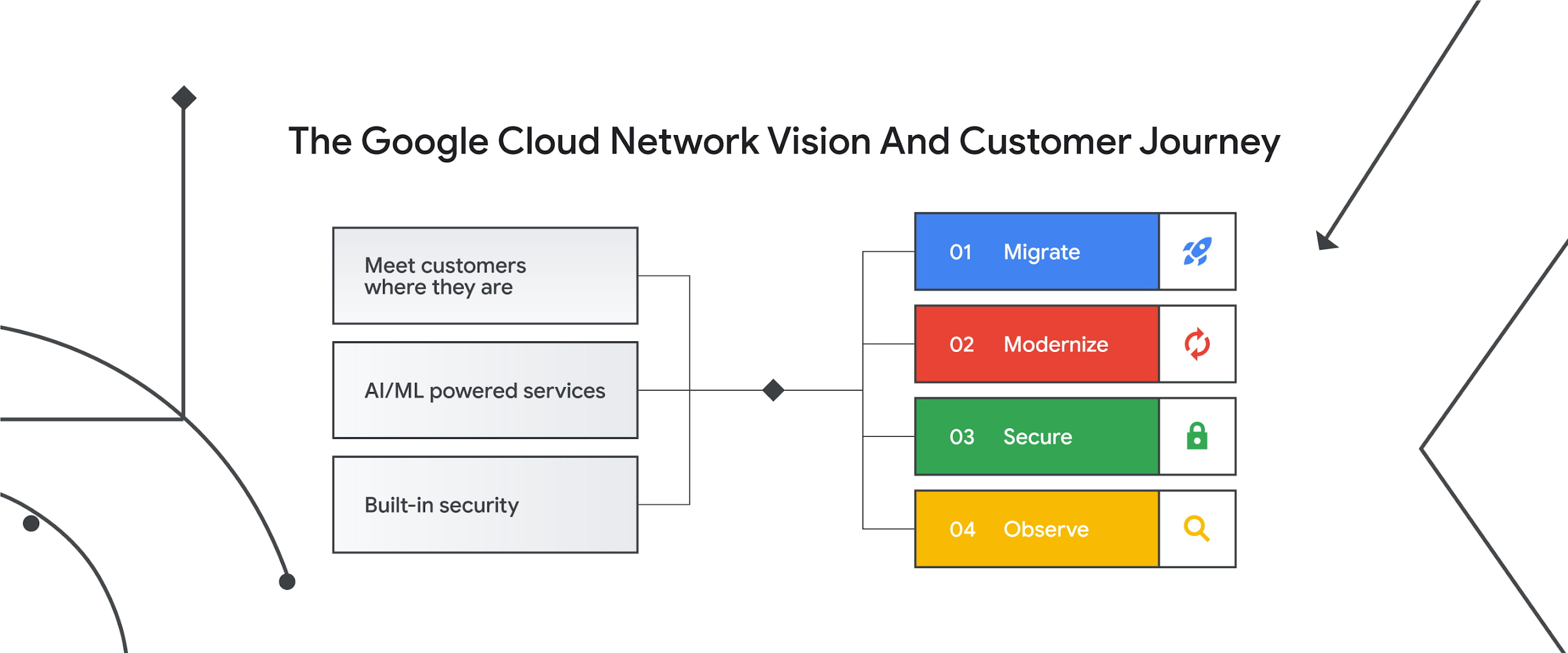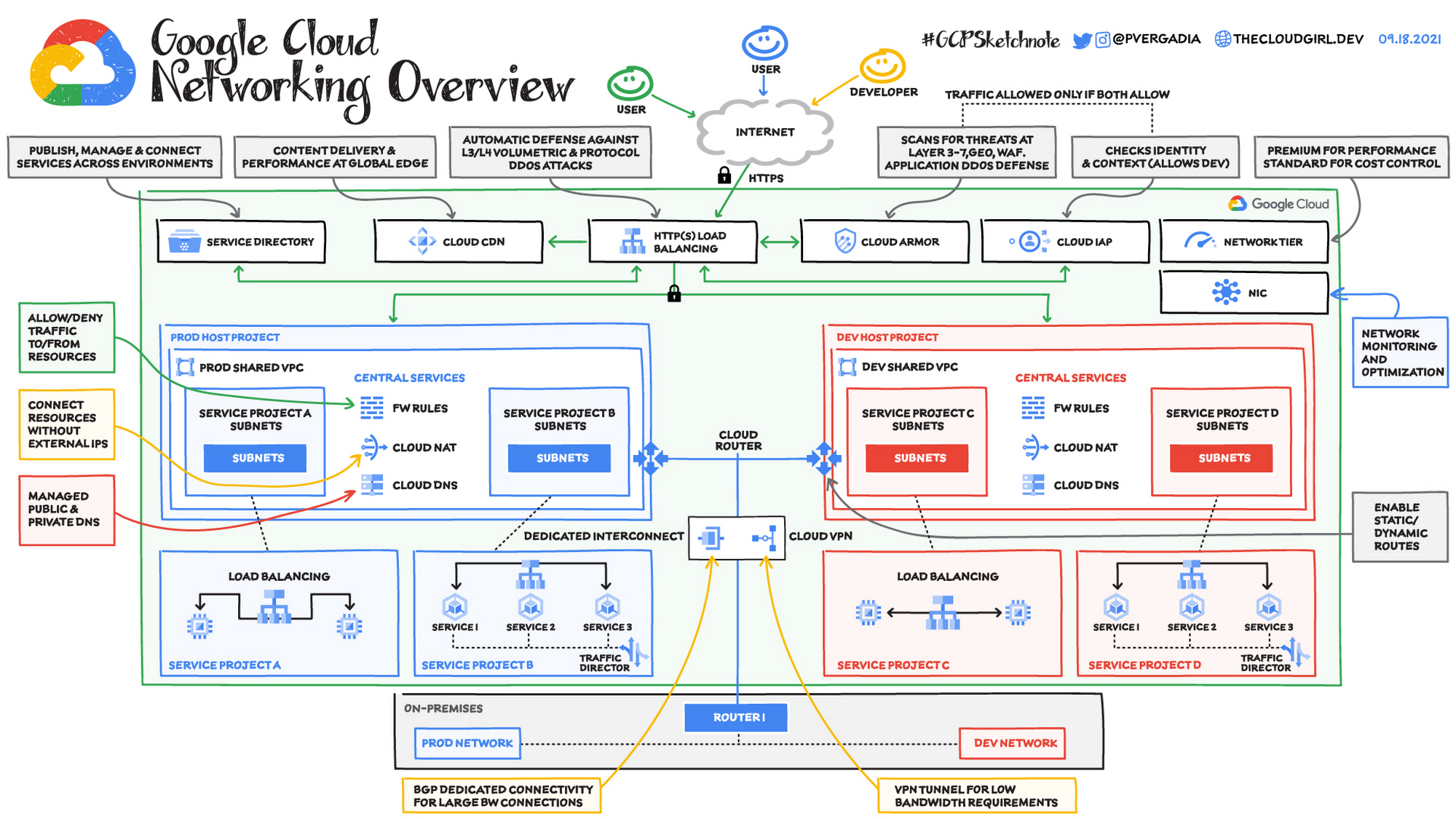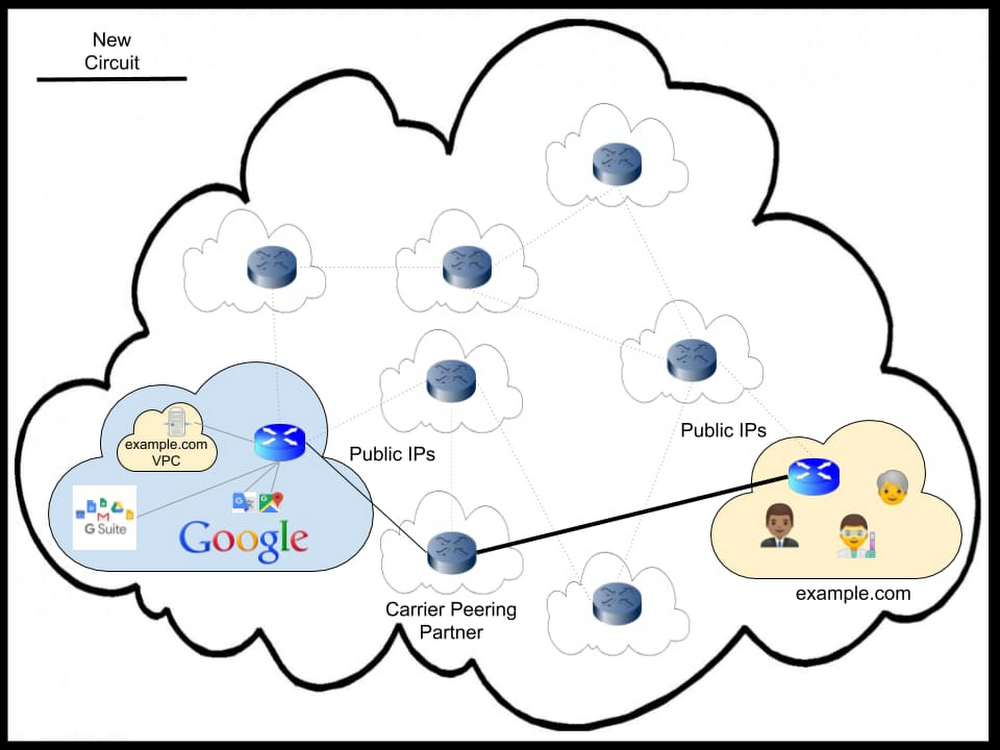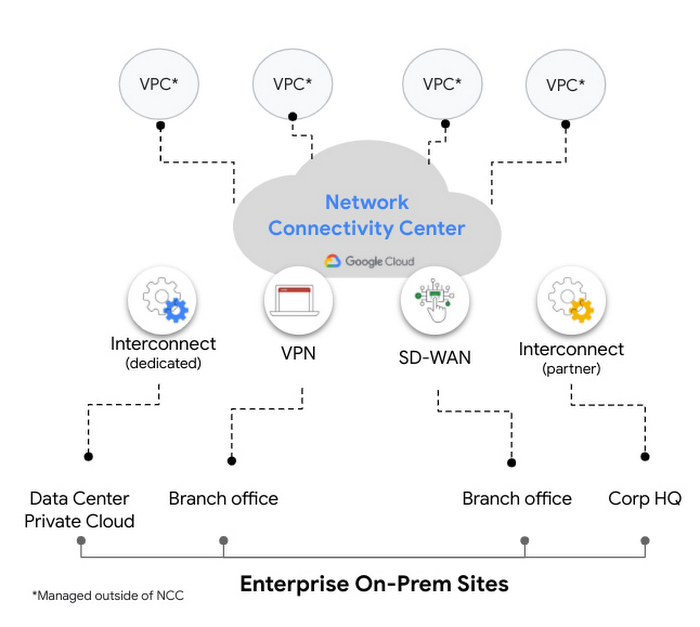What are Google Cloud Networking Services?
Google Cloud Networking Services refer to a suite of tools and technologies offered by Google Cloud Platform (GCP) to help businesses build, deploy, and manage robust networking infrastructure in the cloud. These services provide a range of functionalities, including virtual private clouds, load balancing, domain name system (DNS) resolution, and content delivery network (CDN) capabilities. By leveraging these services, businesses can improve their networking performance, scalability, and security, while also reducing costs and complexity.
In the context of cloud computing, Google Cloud Networking Services play a critical role in enabling businesses to build highly available and responsive applications and services. With the ability to quickly and easily provision networking resources, businesses can focus on developing and delivering their products and services, rather than worrying about the underlying infrastructure. Additionally, Google Cloud Networking Services provide a range of features to help businesses optimize their networking performance, including traffic management, network monitoring, and security controls.
Overall, Google Cloud Networking Services offer a powerful and flexible solution for businesses looking to build and manage their networking infrastructure in the cloud. By taking advantage of these services, businesses can improve their networking performance, scalability, and security, while also reducing costs and complexity.
Key Components of Google Cloud Networking Services
Google Cloud Networking Services offer a range of components that work together to provide a robust networking solution for businesses. Here are some of the key components:
Virtual Private Cloud (VPC)
VPC is a fully customizable and secure virtual network that allows businesses to define their own IP address ranges, subnets, and firewall rules. With VPC, businesses can create isolated networks for their applications and services, and control access to these networks using firewall rules and access control policies.
Cloud Load Balancing
Cloud Load Balancing is a fully managed service that allows businesses to distribute traffic across multiple regions and zones, ensuring high availability and responsiveness. With Cloud Load Balancing, businesses can automatically scale their applications and services based on traffic demand, and ensure that their users experience low latency and high performance.
Cloud DNS
Cloud DNS is a highly scalable and reliable Domain Name System (DNS) service that allows businesses to manage their domain names and IP addresses. With Cloud DNS, businesses can quickly and easily create and manage DNS records, and ensure that their users can access their applications and services using familiar domain names.
Cloud CDN
Cloud CDN is a content delivery network that allows businesses to cache and serve their content from Google’s global network of edge locations. With Cloud CDN, businesses can improve their website and application performance, reduce their bandwidth costs, and ensure that their users experience fast and responsive applications and services.
Together, these components provide a powerful and flexible networking solution for businesses. By leveraging these services, businesses can improve their networking performance, scalability, and security, while also reducing costs and complexity.
How to Set Up Google Cloud Networking Services
Setting up Google Cloud Networking Services can seem like a daunting task, but with the right approach, it can be a straightforward and rewarding experience. Here’s a step-by-step guide to help you get started:
Step 1: Create a Google Cloud Project
To use Google Cloud Networking Services, you’ll need to create a Google Cloud project. This is a container for your resources, configurations, and settings. To create a project, go to the Google Cloud Console, click on the project drop-down menu, and select “New Project”. Follow the prompts to create a new project, and make sure to enable the necessary APIs and services.
Step 2: Create a Virtual Private Cloud (VPC)
Once you have a project, you can create a Virtual Private Cloud (VPC). A VPC is a virtual network that allows you to define your own IP address ranges, subnets, and firewall rules. To create a VPC, go to the VPC page in the Google Cloud Console, click on the “Create VPC” button, and follow the prompts to create a new VPC. Make sure to configure your VPC to meet your networking needs, including subnets, firewall rules, and routing.
Step 3: Set Up Cloud Load Balancing
Once you have a VPC, you can set up Cloud Load Balancing. Cloud Load Balancing is a fully managed service that allows you to distribute traffic across multiple regions and zones, ensuring high availability and responsiveness. To set up Cloud Load Balancing, go to the Load Balancing page in the Google Cloud Console, click on the “Create Load Balancer” button, and follow the prompts to create a new load balancer. Make sure to configure your load balancer to meet your traffic distribution needs, including backend services, health checks, and session affinity.
Step 4: Set Up Cloud DNS
Once you have Cloud Load Balancing set up, you can set up Cloud DNS. Cloud DNS is a highly scalable and reliable Domain Name System (DNS) service that allows you to manage your domain names and IP addresses. To set up Cloud DNS, go to the DNS page in the Google Cloud Console, click on the “Create Zone” button, and follow the prompts to create a new DNS zone. Make sure to configure your DNS zone to meet your domain name and IP address needs, including DNS records, TTL values, and name servers.
Step 5: Set Up Cloud CDN
Once you have Cloud DNS set up, you can set up Cloud CDN. Cloud CDN is a content delivery network that allows you to cache and serve your content from Google’s global network of edge locations. To set up Cloud CDN, go to the CDN page in the Google Cloud Console, click on the “Create Cache” button, and follow the prompts to create a new cache. Make sure to configure your cache to meet your content delivery needs, including cache origins, cache invalidation, and cache behavior.
By following these steps, you can set up Google Cloud Networking Services and start building a robust networking solution for your business. Remember to follow best practices for configuring each component, including using descriptive names, configuring firewall rules, and monitoring network performance. With Google Cloud Networking Services, you can improve your networking performance, scalability, and security, while also reducing costs and complexity.
Real-World Use Cases of Google Cloud Networking Services
Google Cloud Networking Services offer a wide range of benefits for businesses, from improved networking performance and scalability to reduced costs and complexity. Here are some real-world use cases of Google Cloud Networking Services, showcasing how businesses in different industries have leveraged these services to improve their networking infrastructure and achieve their goals.
Use Case 1: Media and Entertainment
Media and entertainment companies often need to deliver large amounts of multimedia content to users around the world. With Google Cloud Networking Services, these companies can use Cloud CDN to cache and serve their content from Google’s global network of edge locations, ensuring fast and responsive content delivery. For example, a video streaming service might use Cloud CDN to cache and serve its videos from edge locations in different regions, reducing latency and improving the user experience.
Comparing Google Cloud Networking Services to Other Cloud Providers
When it comes to cloud computing, businesses have a range of options to choose from, including Google Cloud, Amazon Web Services (AWS), and Microsoft Azure. Each of these providers offers its own set of networking services, with their own strengths and weaknesses. Here’s a comparison of Google Cloud Networking Services to other cloud providers, to help you make an informed decision.
Google Cloud Networking Services vs. AWS
Both Google Cloud and AWS offer robust networking services, with similar features and capabilities. However, there are some differences to consider. For example, Google Cloud offers simpler and more intuitive networking tools, with a focus on automation and ease of use. AWS, on the other hand, offers a wider range of networking services, with more customization options and granular control. Ultimately, the choice between Google Cloud and AWS will depend on your specific needs and preferences.
Google Cloud Networking Services vs. Microsoft Azure
Like Google Cloud and AWS, Microsoft Azure offers a range of networking services, with similar features and capabilities. However, there are some differences to consider. For example, Microsoft Azure offers tighter integration with Windows-based systems and applications, making it a natural choice for businesses that rely heavily on Windows. Google Cloud, on the other hand, offers simpler and more intuitive networking tools, with a focus on automation and ease of use. Ultimately, the choice between Google Cloud and Microsoft Azure will depend on your specific needs and preferences.
When comparing Google Cloud Networking Services to other cloud providers, it’s important to consider your specific needs and requirements. Each provider offers its own set of strengths and weaknesses, and the right choice will depend on your business goals, networking infrastructure, and budget. By understanding the key differences between Google Cloud and other cloud providers, you can make an informed decision and choose the right networking services for your business.
Security Best Practices for Google Cloud Networking Services
Security is a top priority for businesses when it comes to cloud computing. With Google Cloud Networking Services, businesses can rest assured that their networking infrastructure is secure and protected. Here are some best practices for configuring security settings in Google Cloud Networking Services.
Configure Firewall Rules
Firewall rules are an essential part of network security, allowing businesses to control incoming and outgoing traffic based on specific criteria. With Google Cloud Networking Services, businesses can configure firewall rules at the Virtual Private Cloud (VPC) level, allowing them to control traffic for their entire network. When configuring firewall rules, businesses should consider the following:
- Allow only necessary traffic: Only allow traffic that is necessary for your applications and services. This helps to reduce the attack surface and prevent unauthorized access.
- Use least privilege: Only grant the minimum permissions necessary for each user and application. This helps to prevent accidental or malicious changes to your network configuration.
- Monitor traffic: Regularly monitor network traffic and adjust firewall rules as necessary. This helps to ensure that your network is secure and protected against new threats.
Configure Access Control Policies
Access control policies allow businesses to control who can access their networking resources and under what conditions. With Google Cloud Networking Services, businesses can configure access control policies at the project, folder, or organization level, allowing them to control access to their entire network. When configuring access control policies, businesses should consider the following:
- Use role-based access control: Assign roles to users and applications based on their responsibilities and functions. This helps to ensure that users and applications only have access to the resources they need.
- Use conditional access: Use conditions such as IP address, device security status, and user location to control access to networking resources. This helps to prevent unauthorized access and reduce the risk of data breaches.
- Monitor access: Regularly monitor access to networking resources and adjust access control policies as necessary. This helps to ensure that only authorized users and applications have access to your network.
Configure Encryption Settings
Encryption is an essential part of network security, allowing businesses to protect their data in transit and at rest. With Google Cloud Networking Services, businesses can configure encryption settings for their networking resources, ensuring that their data is secure and protected. When configuring encryption settings, businesses should consider the following:
- Use encryption in transit: Use encryption protocols such as HTTPS, SSL, and TLS to protect data in transit. This helps to prevent data interception and eavesdropping.
- Use encryption at rest: Use encryption technologies such as disk encryption and database encryption to protect data at rest. This helps to prevent data theft and unauthorized access.
- Monitor encryption: Regularly monitor encryption settings and adjust them as necessary. This helps to ensure that your data is always secure and protected.
By following these best practices, businesses can ensure that their networking infrastructure is secure and protected with Google Cloud Networking Services. With robust security settings and ongoing monitoring, businesses can leverage the power of cloud computing while minimizing the risk of data breaches and other security threats.
Monitoring and Troubleshooting Google Cloud Networking Services
Monitoring and troubleshooting are critical components of managing any networking infrastructure, including Google Cloud Networking Services. With the right tools and metrics, businesses can quickly identify and resolve issues, ensuring optimal network performance and reliability. Here’s how to monitor and troubleshoot Google Cloud Networking Services.
Monitoring Tools and Metrics
Google Cloud Networking Services provide a range of monitoring tools and metrics, allowing businesses to track network performance and diagnose issues. Here are some of the key monitoring tools and metrics to consider:
- Cloud Monitoring: Google Cloud Monitoring is a comprehensive monitoring solution that provides visibility into the performance and health of your network. With Cloud Monitoring, businesses can track metrics such as network latency, packet loss, and error rates, and set up alerts for specific conditions.
- Cloud Logging: Google Cloud Logging is a logging solution that provides detailed insights into network activity. With Cloud Logging, businesses can track network events, such as configuration changes and security incidents, and use log data to diagnose issues.
- Network Service Tiers: Google Cloud Networking Services offer different network service tiers, each with its own set of performance and reliability guarantees. By monitoring network service tier performance, businesses can ensure that they are getting the level of service they expect and paid for.
Troubleshooting Common Issues
While monitoring tools and metrics can help identify issues, troubleshooting often requires a deeper understanding of network configuration and behavior. Here are some common issues and troubleshooting steps to consider:
- High Latency: High latency can be caused by a range of factors, including network congestion, routing issues, and application performance. To troubleshoot high latency, businesses should start by identifying the source of the issue, using monitoring tools and metrics. Once the source is identified, businesses can take steps to address the issue, such as optimizing network routing or adjusting application configuration.
- Packet Loss: Packet loss can be caused by network congestion, faulty hardware, or misconfigured network devices. To troubleshoot packet loss, businesses should start by identifying the source of the issue, using monitoring tools and metrics. Once the source is identified, businesses can take steps to address the issue, such as adjusting network configuration or replacing faulty hardware.
- Security Incidents: Security incidents can be caused by a range of factors, including malicious attacks, misconfigured network devices, and user error. To troubleshoot security incidents, businesses should start by identifying the source of the issue, using monitoring tools and logs. Once the source is identified, businesses can take steps to address the issue, such as adjusting firewall rules or access control policies.
By using monitoring tools and metrics, and following best practices for troubleshooting common issues, businesses can ensure that their Google Cloud Networking Services are performing optimally and securely. With ongoing monitoring and troubleshooting, businesses can identify and address issues before they become critical, ensuring network reliability and performance.
Future Trends in Google Cloud Networking Services
Google Cloud Networking Services are constantly evolving, with new features and technologies being added regularly. Here are some of the most exciting future trends in Google Cloud Networking Services, and how they might impact businesses and networking infrastructure in the future.
Network Service Tiers
Google Cloud Networking Services currently offer two network service tiers: Standard and Premium. However, Google has announced that it will be adding a new network service tier, called Silver, which will offer a balance between cost and performance. This new tier will provide businesses with more flexibility and choice when it comes to networking services, allowing them to select the right tier for their specific needs and budget.
Network Telemetry
Network telemetry is a technology that allows businesses to collect and analyze detailed network data, including traffic flow, performance metrics, and security events. Google Cloud Networking Services are currently working on adding network telemetry capabilities, which will provide businesses with deeper insights into their network behavior and performance. With network telemetry, businesses can quickly identify and address network issues, optimize network performance, and improve security.
Network Automation
Network automation is the use of software tools and technologies to automate network configuration, management, and monitoring. Google Cloud Networking Services are currently investing in network automation capabilities, which will allow businesses to automate routine network tasks, reduce human error, and improve network reliability. With network automation, businesses can save time and resources, while ensuring that their networking infrastructure is always up-to-date and optimized.
Network Security
Network security is a top priority for businesses, and Google Cloud Networking Services are constantly working on new security features and technologies. One exciting trend in network security is the use of artificial intelligence (AI) and machine learning (ML) to detect and prevent security threats. Google Cloud Networking Services are currently exploring the use of AI and ML for network security, which will provide businesses with more advanced and proactive security capabilities.
By staying up-to-date with the latest trends and technologies in Google Cloud Networking Services, businesses can ensure that they are getting the most out of their networking infrastructure. With new network service tiers, network telemetry, network automation, and network security features, businesses can improve network performance, reliability, and security, while reducing costs and complexity.







